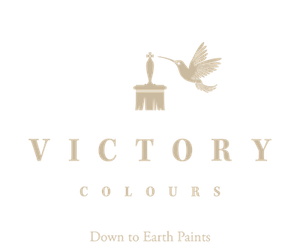Wall Colour Combinations
Posted by Elisha Horobin on

Have you ever wondered how artists and designers manage to achieve the perfect colour combinations? Although an eye for detail and a creative flair is a major element of effective design, colour theory plays a significant role too. Colour psychology helps in determining which colour’s work well together and which do not. Let's have a look at the colour theory and how it can be applied in the home to your wall colour combinations.
What is colour theory?
The colour theory was created using a mixture of art and science and involves a collection of ‘guidelines’ that are used to create aesthetically pleasing colour schemes. The colour wheel was invented in 1666 by Isaac Newton and is still used today to help identify which colours work together. The colour wheel is the basis of colour theory and demonstrates a relationship between colours.
How the colour wheel works
Primary colours
The basic principle of the colour wheel starts with the primary colours which are; red, yellow and blue. These colours are the basis for all of the other colours on the wheel which are made as a combination of the primary colours. Primary colours are pure, which means you cannot create them from other colours.
Secondary colours
Between the primary colours you have secondary colours such as orange, green and purple. These line up between the primary colours as they have been created as a result of being formed from an equal mix of 2 of the primary colours.
Tertiary colours
Then you have tertiary colours. These are formed by combining a mixture of a primary colour with a secondary colour that is next to it on the wheel. The result is less vivid hues.
How is colour theory applied to wall colour combinations?
Colour theory is regularly applied by artists and designers to set the mood of a piece of work, whether that be a painting or a room in the home. By learning the basics of colour theory and how the colour wheel works, you should be able to successfully apply it next time you decide to decorate. There are a number of ways colour schemes can be derived from the colour wheel:
Complementary
Using two colour shades that are directly opposite one and other on the colour wheel is guaranteed to create one of the brightest wall colour combinations. This combination is known as complementary and as the name suggests, works well because the colours complement each other well. It provides a high impact and high contrast colour combination. An example of a complementary colour scheme is orange and blue.
Monochromatic
Another colour scheme that can be applied to your walls is a monochromatic colour combination. This involves three shades and tones of one base colour. This works great in home design and in fashion as it provides a subtle contrast yet a conservative colour combination. We love it because it's easy to apply to a colour scheme in a room and creates a harmonious feel without having to worry about colour clashing.
Analogous
Next we have analogous wall colour combinations. This involves again using three colours, but this time it involves colours that are side by side on the colour wheel rather than using different shades of one colour. Although this scheme can be versatile, if not done right it can be overpowering. Our top tip when applying an analogous colour scheme is to balance it effectively by using one dominant colour and the others as accents.
Triadic
If you are looking for a high contrast colour scheme that combines bold and vibrant colours to create a unique colour scheme, triadic theory might be for you. This involves using three colours that are evenly spaced out on the colour wheel.
Warm and cool colours
Another way the colour wheel can be used is by dividing it into warm and cool colours. Different colour temperatures can evoke different feelings. We talk more about the way emotions link to colours in a previous blog called ‘colour psychology in the home’. A good rule of thumb is that warmer colours evoke cosiness and positive energy, whereas cooler colours can evoke serenity, sterility or even loneliness. Generally, warm colours run from yellow to red and cool colours from blue to green.
Wall colour combinations- colour matching service

Here at Victory Colours we pride ourselves on our eye for colour. We know the importance of getting the colour scheme in your home right. The colour spectrum is limitless and although we offer a beautiful palette of colours, we’re not offended if you fancy something a bit different than what we offer. We also know that all of the benefits that come with Victory Colours paint formula make our paint sought after, so we now offer a colour matching service.
Our colour matching service means you can give us a paint colour that you like that we don’t stock, and we will do our best to match it for you. This way you can get the wall colour combinations you dream of with all the excellent benefits of Victory Colours paint which include:
- Eco friendly
- Low VOC
- Exceptionally low odour
- Toxic free
- Cruelty free and vegan
- Washable and durable
